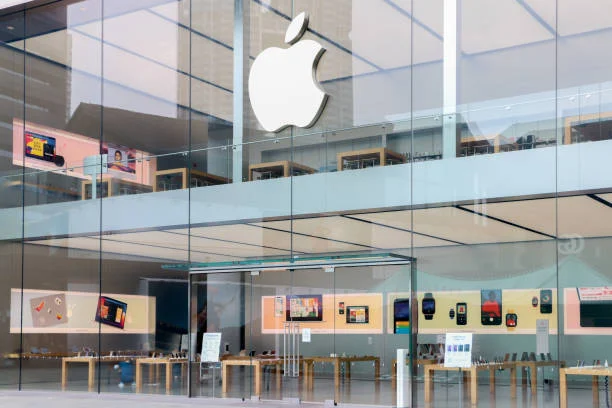The growing tension around Apple’s key project or Apple’s Struggle — the full-scale AI transformation of the Siri voice assistant is becoming more noticeable. The latest data from WWDC 2025 indicates that Apple is now targeting spring 2026 for the final release of its AI Siri. However, this path has turned out to be much more thorny than expected, and the cost of delays is already noticeable.
A Missed Revolution: iPhone 16 and the AI Letdown
The AI-Siri theme has become a real headache for Cupertino. The company was actively preparing the ground for a revolutionary update back in 2023, linking its announcement with the upcoming iPhone 16 in the fall of 2024. Investors and the market believed this narrative, anticipating Apple’s Struggle long-awaited breakthrough in generative AI. However, the release of iPhone 16 and iOS 18 in the fall of 2024 was a bitter disappointment. Siri’s promised “revolutionary” AI functions were either crude or completely absent.
Market Reaction: Reputation and Stocks Take a Hit
The consequences of this failure were immediate and profound. Apple, synonymous with innovation, has faced criticism for failing to deliver on its promises in the critical field of AI. The image of a technology leader has been shaken. The market reacted with a decline in stock price. Apple shares lost about 5% in the week following the announcement and demonstration of Siri’s limited capabilities, highlighting the gap between expectations and reality. This drop had a noticeable impact on Apple’s position or Apple’s Struggle in the S&P 500 index, given its huge market capitalization. The weight adjustment also dragged down the dynamics of ES futures, creating short-term volatility, partly triggered by disappointment in a key component.

At the same time, top stock gainers during this period included companies leading in generative AI, such as Nvidia, Microsoft, and other chip or software firms, which continued to benefit from the accelerating AI adoption trend — further underscoring the market’s shifting focus toward proven AI leaders.
In response to the barrage of questions, Apple remains outwardly calm. Official statements say “the modernization of Siri is planned for next year” (i.e., 2026). The company hints that if the development goes according to plan, we can see the first significant demonstrations of the updated AI Siri in the fall of 2025 as part of the presentation of the iPhone 17. However, insiders say the final, full-featured release has now been postponed to spring 2026.
Siri’s Longstanding Struggle to Catch Up
This is not the first delay for Siri. The assistant debuted in 2011 and has lagged behind the competition ever since. The largest-ever update with deep AI integration was initially planned for June 2024. Failure to meet these deadlines has already been a blow, undermining confidence in Apple’s or Apple’s Struggle ability to quickly and effectively implement cutting-edge AI technologies. The problem has gone beyond just a technical delay; it has become a matter of competitiveness in an era of rapid AI development.
Continue your journey: This related article is worth your time.
What’s slowing Apple down?
App Intents and deep integration challenges: The key element of the new Siri is the App Intents system. It should allow the assistant to launch applications, understand their internal logic, and perform complex, multi-step tasks inside them. Creating a universal and reliable framework for thousands of diverse applications is a huge engineering task.
Complex Dialogues and Always-On Functionality: Apple struggles to transform Siri into an assistant capable of conducting meaningful, contextual dialogues and being a constantly active background assistant, anticipating needs. This requires enormous computing resources and breakthroughs in the efficiency of the local execution of AI models on the device.
Strategic Dilemma: Independence vs. Third-Party AI: Apple is actively debating the degree of reliance on third-party AI solutions such as OpenAI (ChatGPT) or Google (Gemini). So far, the company uses them to complement its services, but for Siri’s key functions, it is committed to its own development. There are even options for buying specialized AI startups to speed up the process.
The Domino Effect: Broader Product Delays
Siri’s delay has disastrous consequences for the entire roadmap:
- Smart Home device shelved: The development of a new smart home device focused on voice control (previously targeted for March 2025) has been postponed indefinitely. Without the advanced AI Siri, the device loses its purpose.
- Smart glasses (AR/VR) put on hold: The announcement of smart glasses that can analyze the environment through cameras has also been postponed. Apple will probably have to rely more heavily on AI partners for this functionality, which calls into question the uniqueness and control of the ecosystem.
Spring 2026: The True Test of Apple’s AI Future
Apple’s plans to launch Siri AI by spring 2026 aren’t just about announcing a new feature. This is a critically important task to restore reputation, protect market positions, and confirm the status as an innovative leader. The technical difficulties, especially with deep integration (App Intents) and complex dialogues, are enormous.
The delays have already led to the postponement of key products and hurt stocks. Dependence on partners is a double-edged sword. Apple finds itself in a situation where delay could prove fatal in the context of the AI race. Whether the company will be able to mobilize resources, possibly through strategic acquisitions, and meet the new deadline will be one of the main topics in the technology and financial markets in the next 18 months.
The spring of 2026 will not just be a release, it will also examine Apple’s viability or Apple’s Struggle in the age of AI.
Discover fresh content every day—visit 2A Magazine.







